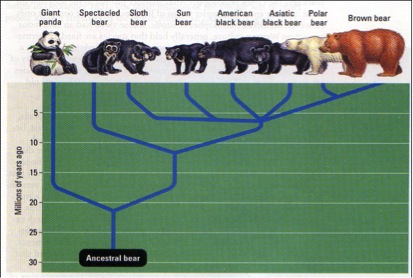When Times Get Tough,
the Tough Get Vicious:
Polar Bear Infanticide
Marisol Lauffer, Aashis Thapa, Gustavo Lopez
Biology 342 Fall 2012
Phylogeny
How did it evolve?
Phylogeny of the infanticide behavior in polar bear refers to the history (genetic) of the behavior in the Polar bear's phylum.
Infanticide seems to be an atavistic (tendency to revert to the ancestral type) trait which is prevalent in other closely related species of bears. The bear family, Ursidae, evolved from the earlier ancestors of the order Carnivoran. Ursidae is a subfamily that developed later. Polar bears, Brown bears and Grizzly bears are all species of the same family, with Brown bears and Grizzly bears being the closest related extant species to Polar Bears, and diverged from the common ancestor only recently.

Figure 1. A phylogenic tree of the Ursidae family.
In fact, Polar bears diverged from Brown bears in recent evolutionary time (approx 4-5 million years ago) and Polar bears can even mate with Brown bears to produce hybrids suggesting a close link between these two species. Infanticide has even been observed in this hybrid (Gonzalez et al. 2012). Furthermore, similar behaviors are found in Grizzly bear, even if they are not infanticide in full(Libal et al. 2011). While these behaviors have only been observed in the recent past, they strongly suggest that the Carnivora ancestor of the Polar bear, Brown bear and the Grizzly bear had this trait, and that it has been passed down through generations in different species of the bear family, though in different forms. More research needs to be done to determine whether the similar behaviors in the related bears definitively have the same mechanistic and evolutionary origin.